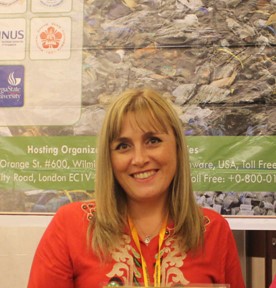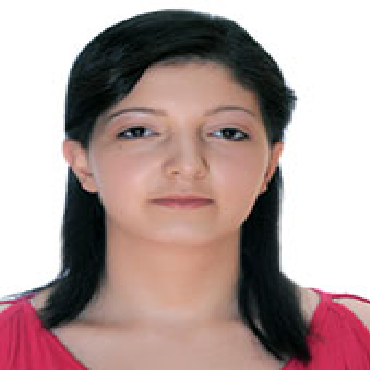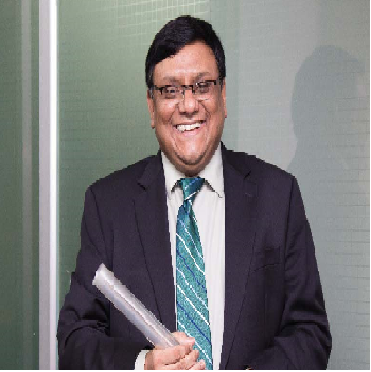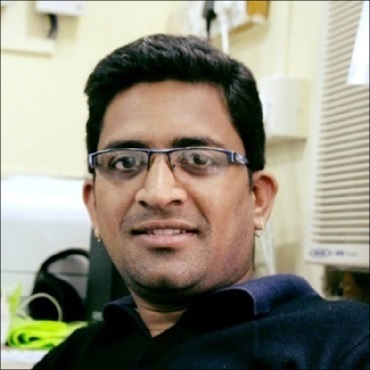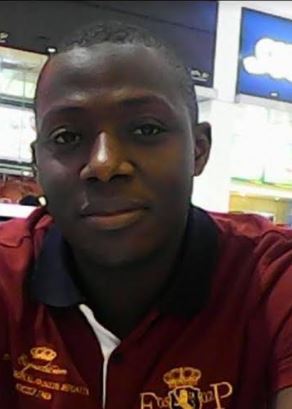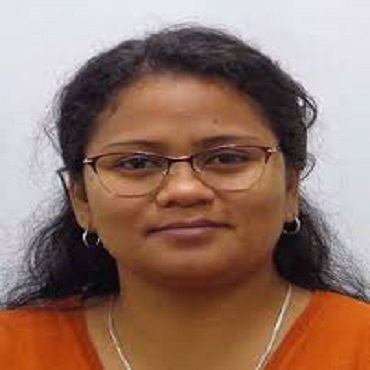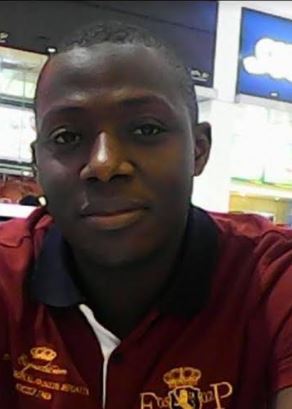Scientific Program
Keynote Session:
Title: Recycle polyurethane foam, shoe sole, elastomeric waste redefined to reuse
Biography:
Abstract:
Title: Determination of the likelihood of emerging illegal dumpsites in high mountainous rural regions as an example of Georgia
Biography:
Natela Dvalishvili has completed her PhD from Iakob Gogebashvili Telavi State University and postdoctoral studies from Institute of Hydrometeorology of Georgian National Academy of Sciences of Ecology. She is the scientist of Department of Environmental Pollution Monitoring and Prognosis of Institute of Hydrometeorology of Georgian Technical University. She has published more than 30 papers in reputed journals and is the Head and expert of more projects.
Abstract:
This work supported by Shota Rustaveli National Science Foundation of Georgia(SRNSFG), Project Numbe: FR-18-718
Oral Session 1:
- Solid Waste Management | Metal Recycling| Plastics and Rubber Recycling | Waste Water Treatments | E-Wastes Recycling and Management | Waste Treatment Technologies | Thermal Waste Recovery | Food and Agricultural Waste Recycling | Waste to Energy
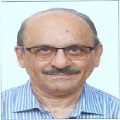
Chair
Jayant Khadilkar
Jay Elastomers Pvt.Ltd, India
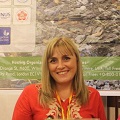
Co-Chair
Natela Dvalishvili
Institute of Hydrometeorology at Georgian Technical University, Georgia
Title: From waste to energy; A domestic solution of cooking oil treatment
Biography:
Macole Sabat has completed her PhD in 2016 from Ecole Centrale Paris, France. She is currently an assistant professor in the mechanical engineering department, University of Balamand, Lebanon. She is interested the multidisciplinary topics on the interface of mechanical, chemical engineering and environmental sciences namely the waste management, bio-fuel production, combustion and aerosol transport. Her main specialty is in CFD and multiphase flow.
Abstract:
The ever increase in energy consumption across the world is booming significantly. This has led to fossil fuels to dwindle. The increase in population and fuel-based machinery acts as an extra burden since the traditional fuels is non-renewable and nonsustainable. In addition, these fuel-based energy sources damage the environment. For such reasons, the industries are looking for alternative sources of energy, mainly focusing on renewable energy such as solar, wind, hydro, tidal and geothermal energy. Another less common source of renewable energy is Biofuel. What distinguishes Biofuel from other sustainable energy sources is that Biomass can be converted directly in a liquid form which is usually used for transportation desires. The most popular types of Biofuels are Biodiesel and alcohol called Ethanol. Biodiesel possesses similar properties to fossil fuel diesel but is non-toxic, produces a lower level of pollutant emissions compared to fossil fuels and is considered biodegradable. Thus, Biodiesel production and research is gaining paramount importance and has become one of the fastest growing alternative fuels across the globe. Namely, the U.S. biodiesel consumption increased from nearly 0.25 billion gallons in 2010 to nearly 2.00 billion gallons in 2017 (U.S. EIA). On the other hand, since biodiesel is a clean fuel made from vegetable oils, fats, or greases its production also contributes to the recycling of these waste oils and greases. The subject of this contribution is the design of a domestic machine transforming WCO to Biodiesel. This multidisciplinary topic is presented from the chemical and mechanical standpoints. The former emphasizes on carrying the most adequate chemical process to end up with the correct biodiesel blend. Whereas the latter deals with the actual design of storage and reactor tanks with an optimization of the mixing process through modeling and simulating mixing using ANSYS Fluent for different impellers design.
Title: China plastic import ban and its impact on PET recycling in Bangladesh
Biography:
Abstract:
Title: Identification, extraction, storage and commercial development of Potash PKO from wasting cocoa pods in Ghana for the organic cosmetics and fertilizer industries in line with UN Sustainable Development Goals.
Biography:
Prince Israel Akwaaba: A young vibrant, dynamic, results-oriented leader and new age Ghanaian entrepreneur with a strong track record of performance in developing natural organic products and pharmaceuticals.
Abstract:
Title: Recovery of metals from dry shot blast waste generated in the stainless-steel production process
Biography:
Abstract:
Dry shot blast generated during stainless steel production contains high content of valued metals such as iron chromium and nickel. These metals are in the form of oxides and it can be used as a raw material in iron and steel. This work aims to study the feasibility of metals recovery from dry shot blast by smelting reduction process. Smelting reduction of dry shot blast by using coking coal as reductant was conducted in an induction furnace. The effect of metallurgical parameters e.g. stoichiometry ratio of reductant per oxygen containing in dry shot blast, CaO/SiO2 of slag forming and CaF2 in slag, on %recovery of metal product was investigated. The results based on this study showed that the weight of metal product increases with increased the amount of coke to about 1.5 of stoichiometric molar ratio. Increasing of coke above this amount leads to decrease %recovery of metal product. Moreover, the weight of metal product is increased when the ratio of CaO/SiO2 in slag decreased from 2 to 1. The chemical composition of the metal product is in the range of commercial grade and it can be used as raw materials to produce steel and cast iron alloy.
Title: Recycling of galvanic copper sludge for pure copper production
Biography:
Natthicha Ma-ud has completed his bachelor degree in metallurgical engineering from the School of Metallurgical Engineering, Suranaree University of Technology, Thailand. Presently, he is pursuing masters at the same school.
Abstract:
Title: Recycling of spent electro-nickel-plating solution by electrowinning
Biography:
Abstract:
This research aims to study the feasibility of nickel recovery from spent electroplating solution via hydrometallurgy and electro-chemical treatment. The spent nickel-plating solution obtained as an industrial waste was found to contain nickel of 89.4 g/l, which was still in high quantity sufficient for prospective recovery. In this research, precipitation of nickel from the spent electro plating solution was first carried out to separate other unwanted impurities. The remained nickel precipitate was then leached by using 1 M or 2 M H2SO4 for 24 h. at a solid/liquid ratio of 100 g/l. The leached solution was then adjusted to obtain pH 2 prior to electrowinning. It was found that the maximum weight of nickel cathode is 5.07 g or at 90.7% recovery of 97.46% purity can be achieved in a condition using 1 M H2SO4 and electrical potential 3.7 V.
Title: Home composting systems for organic waste treatment: Technologies, greenhouse gas emissions and economic analysis
Biography:
Venkata Ravi Sankar Cheela is perusing his PhD from Indian Institute of Technology Kharagpur (India) and Curtin University (Australia). His areas of interest include Solid waste management, sustainability engineering and industrial ecology. He worked as a faculty in Civil Engineering department at MVGR College of Engineering, India for a period of 5 years. He is associated with councils in India and done consulting works in the field of solid waste management. He has published 8 journal articles and book chapters.
Abstract:
In developing countries, the biodegradable component of municipal solid waste is typically composed of 40-60% kitchen waste. Composting is a globally accepted technology for clean and sustainable management of organic waste. This study attempts to assess three domestic composting systems, Kamba (clay pots), rotary drum, and bin composting. Technical and economic features of the systems were also discussed and compared. During the composting process greenhouse gases are generated, mechanisms to reduce the greenhouse emissions are noted. Composting and Bokashi systems are compared in terms of process mechanisms, the quality of end products, operation and maintenance process. The domestic composting process reduces the pressure on the collection and transportation components of municipal solid waste management. This review provides an insight into the development of strategies for municipal solid waste management at the household level.
Title: Life and waste recycling: Innovative waste management options in Africa
Biography:
Swaibu kasenke has completed his diploma in agriculture and currently pursuing agriculture and environmental sciences on degree basis in Makerere University. He is currently working in recycling and pollution control at Acquila Recycling plant Kampala, Uganda.
Abstract:
Title: Recycling of post-consumer plastic packaging into cementitious composite
Biography:
Rafenomananjara Tsinjo Nirina has completed his master’s degree in chemical engineering at the age of 23 years from Polytechnics School University of Antananarivo, and studies at University of Miyazaki. She has worked in an oil company, then construction company as engineer before continuing her study in Japan.
Abstract:
In African countries, post-consumer plastic packaging has become a challenge in terms of marine pollution by dumping of plastics; global warming gas generation by incineration of plastics technologies sustainability. Some cities with more than one million inhabitants still have only small landfills, while the size of the population involves huge amounts of waste. In the case of Madagascar, municipalities collect postconsumer plastic waste composed of different types of dirty polymers with other wastes. Among the various types of recycling management approaches, the reuse of waste and recycled plastic material in the construction sector is considered an ideal method for disposing of plastic waste. This present work aims to assess the construction material using plastic packing waste as a replacement of cement in a concrete and evaluate the mechanical and physical properties of the product. Thus, the methodology is easy to implement and appropriate to the local context in Madagascar.
Title: The precious leftover system: A waste disposal process to improve efficiency of waste management system in Indonesia
Biography:
Fatimah Syakura is currently taking undergraduate program on environmental health in Universitas Indonesia. She has been Indonesian delegate for International Islamic Cultural Connect at Osaka-Kyoto in October of 2018. She has also achieved second place on a prefectural essay competition regarding mental health and food in the same month of 2018.


